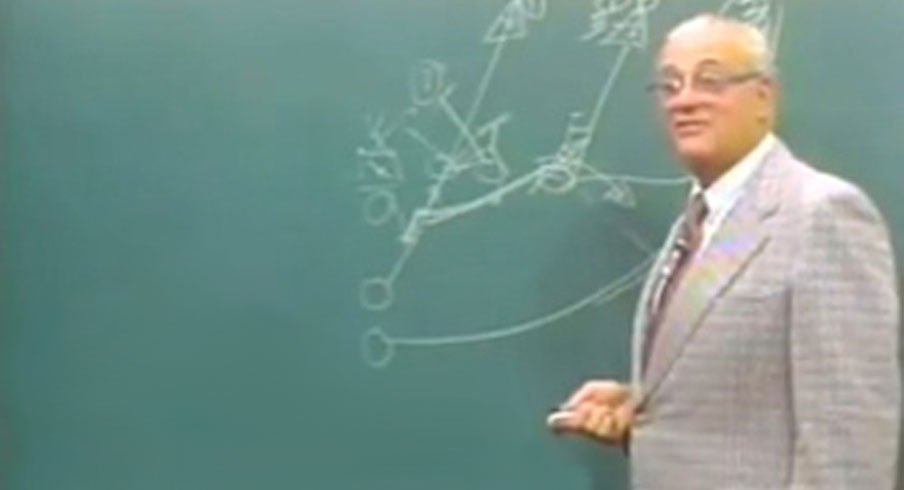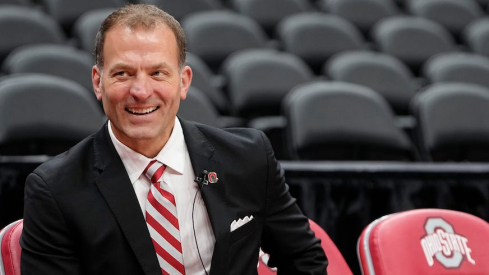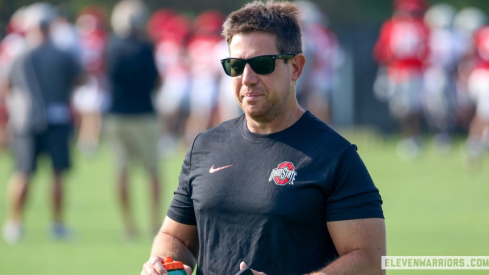Now that we have focused upon Chris Ash's cover 4 defense we turn to his front seven and 4-3 front.
Kyle Jones provided an excellent primer on Ash's defensive alignments. I now want to dig deeper to look at areas where Ash's philosophy differs from previous Ohio State defenses. Specifically what question marks remain regarding how Ash and co-defensive coordinator Luke Fickell will mesh their differing backgrounds?
We going over or under?
Perhaps the most intriguing question is whether the Buckeye defense will base from an under or over front. Although Ohio State played some over front, for most of the last decade the Buckeyes' base defense has been a 4-3 under. That means that the defense line shaded away from the call and the linebackers shifts towards the call. As a result, the strong side Sam linebacker aligns over the tight end, giving the defense essentially a hybridized 3-4 look.
Ash's defenses, by contrast, bases from a 4-3 over.
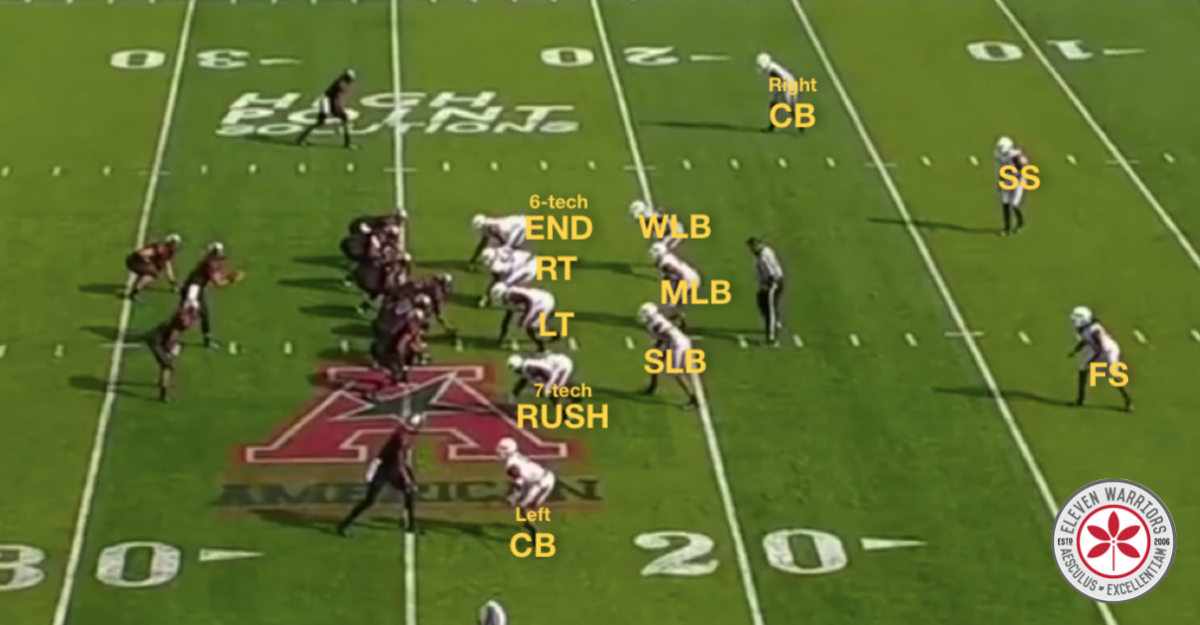
Popularized by Jimmy Johnson at the University of Miami, a 4-3 over front shifts in the opposite direction as the under. The defensive line moves a half gap towards the call, with the linebackers shifting away to compensate. Also known as a stack alignment, the defensive linemen cover up most offensive linemen, allowing all three linebackers room to roam and flow to the football.
As can be seen, Ash's 4-3 over cover 4 philosophy is very similar to another Big Ten defense – Pat Narduzzi's Michigan State units.
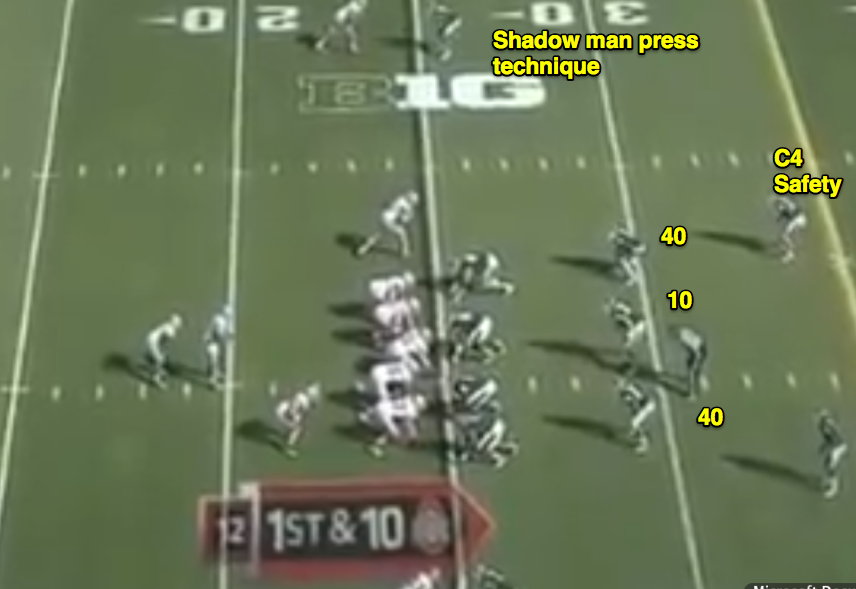
Given that Ash employs a similar cover four formula as Narduzzi – down to the shadow man press technique – it should not be surprising that he also utilizing the same front.
One of the intriguing questions heading into fall then, is whether OSU will become primarily an over team under Ash, or continue to use the under that Fickell has coached.
To Nickel or not to Nickel
This is not to say that the Buckeye defenders are wholly unfamiliar with the over front. In fact, Ohio State's base alignment when they went to a nickel package was a 4-2-5 over. And given that Ohio State utilized nickel whenever an opposing offense used three or more wide receivers, a majority of the Buckeye defensive snaps last year came from a nickel over front.
So the transition to an over front may not be a seismic shift. But prevalent use of nickel is also at odds with Ash's framework. Although he will use a nickel defender, Ash is more likely to utilize his base over defense against 11 shotgun spread personnel (3 WR, 1 RB, 1 TE), counting on his linebackers to fulfill their cover 4 responsibilities.
As such, another aspect to watch going forward is when will the Buckeye defense utilize nickel?
One area of continuity, however, is how Ash utilizes nickel. As the Buckeyes have previously done, when Ash deploys nickel, the nickel replaces the Sam linebacker and walks outside the front and over the slot receiver.

Moving in Pods
Another area of distinction between Ash and previous Ohio State staffs is how Ash moves his front seven between the over and under defense. With previous Buckeye defenses, the defensive linemen played a technique and would flip where they aligned depending on the over or under call.
For example, the 3-technique defensive tackle aligns between the guard and tackle. With the under he will align away from the call. But with the over he will flop and align as a 3-technique towards the call.
The linebackers, by contrast, stayed to the same side and slide over to match the front. So the Will linebacker would always align away from the call. With the under he is responsible for the backside A gap. With the over he commands the backside B gap.
Ash uses the same formula with his defensive linemen. But crucially he also flips his linebackers. In essence, the front seven works in two pods, with the Mike linebacker as the fulcrum. The Will travels with the 3 and 7 technique defensive linemen. The Sam with the 1 and 6 technique.
So in the Under Ash's defense aligns just as Ohio State's in previous seasons. The Sam aligns over the tight end with the Will away from the call. But with the Over they will flip. The Will becomes the strong side linebacker, responsible for the C gap. The Sam becomes the weak side linebacker, responsible for the backside B gap.
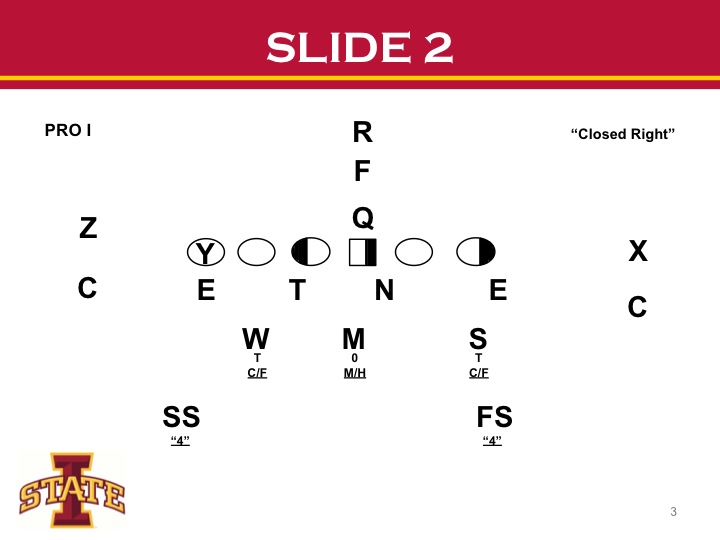
Ash's goal is to have the two trios consistently gain repetitions together as units. He also wants to make it easy for the defense to easily adjust to motion and shifts that changes the offense's formation strength.
In sum, Ash has utilized several different philosophies from Fickell and previous Buckeye defense coordinators. It will bear watching this spring and fall how the Buckeye defensive coaches mix their differing backgrounds together.
